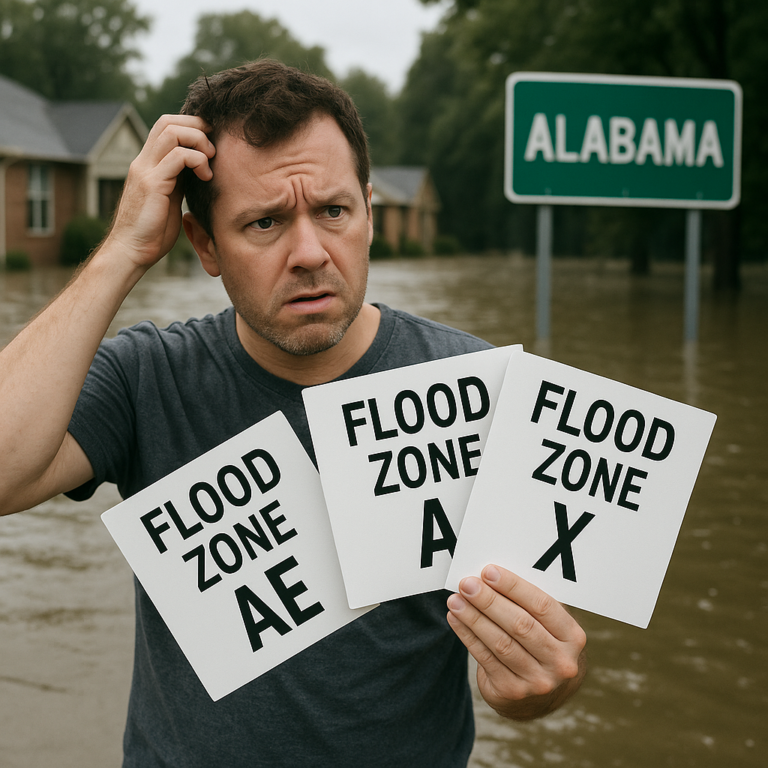What Role Does a Mortgage Company Play in a Flood Claim?
Why does your mortgage company suddenly become your biggest obstacle after a flood?
And why do so many homeowners find themselves fighting to access insurance money they desperately need to rebuild?
When floodwaters devastate your home, filing an insurance claim is just the beginning of a complicated recovery process—especially if you have a mortgage. Your lender has a legal and financial stake in your property, and that means they control a surprising amount of the insurance proceeds you receive.
In this comprehensive guide, you’ll learn how mortgage companies are involved in flood claims—from initial filing through the release of repair funds. You’ll also uncover a massive coverage gap that could cost you hundreds of thousands of dollars in the event of a total loss—and how to protect yourself before disaster strikes.
Here’s what we’ll cover:
-
Why mortgage companies are involved in your flood claim
-
How escrow accounts impact your insurance
-
A detailed look at the dual-endorsement process and how to speed it up
-
Critical gaps in National Flood Insurance Program NFIP coverage and how to close them
-
Best practices to protect yourself before, during, and after a flood
Why Mortgage Companies Are Involved in Flood Claims
When you took out your mortgage, you agreed to keep the property insured—because your lender needs protection just as much as you do. Legally, mortgage companies are listed as a “loss payee” on your flood insurance policy. This gives them partial control over how claim funds are disbursed.
Their job? Ensure the property is restored so their financial interest is protected. Your job? Navigate their process and prove that you’re using the money for repairs. It’s a necessary but frustrating part of recovering from a flood.
How Escrow Accounts Affect Your Flood Insurance
Most homeowners in Special Flood Hazard Areas (SFHAs) pay their flood insurance through an escrow account managed by their mortgage company. This guarantees on-time payments, but also puts your lender in full control of your policy—and gives them detailed insight into your coverage, premiums, and expiration dates.
Important: If your premium increases or your policy lapses, your lender can force-place coverage—often more expensive and less comprehensive than what you’d choose on your own.
Step-by-Step: The Check Endorsement Process
When your flood insurance claim is paid out, the check will be made payable to both you and your mortgage company. You can’t cash it alone—you’ll need their endorsement. Here’s how the process typically unfolds:
1. Contact the Loss Draft Department
Skip customer service. Go directly to the department that handles insurance claims. Ask for their exact documentation requirements and timeline.
2. Prepare Your Documentation Package
Typical requirements include:
-
Endorsed original check
-
Insurance adjuster’s report
-
Contractor repair estimates
-
Proof of property ownership
-
Photos of damage
Large claims may require additional items like contractor licenses and work schedules.
3. Submit and Follow Up
Send your package via certified mail or secure online portal. Then follow up within a few days to confirm receipt and check status.
4. Review, Inspection, and Fund Disbursement
Your lender may send out their own inspector. Depending on your loan status, funds may be released in phases tied to repair milestones.
Fund Release Depends on Loan Status
If Your Mortgage Is Current:
-
You may receive up to 33% of the insurance proceeds upfront.
-
Remaining funds are disbursed as repairs progress, with final release upon inspection.
If You’re Behind on Payments:
-
Initial release may be limited to 25% or less.
-
Additional funds require stricter documentation and inspections.
For Large Claims:
-
Expect more scrutiny, slower disbursements, and frequent verification.
Critical Coverage Gap: NFIP’s $250,000 Limit
Here’s where things get dangerous: the National Flood Insurance Program (NFIP) caps building coverage at $250,000. If your mortgage is larger—or your home’s replacement cost exceeds that—you could be left paying out-of-pocket for massive losses.
Real-World Example:
-
Mortgage balance: $350,000
-
NFIP coverage: $250,000
-
Total loss? You still owe $100,000 on a home that no longer exists.
How to Fix the Coverage Gap
Option 1: Excess Flood Insurance
Adds extra coverage on top of your NFIP policy. Pays out after NFIP limits are exhausted. Best for affordability and layered protection.
Option 2: Private Flood Insurance
Offers higher limits, faster claims processing, and broader coverage. Ideal for high-value homes or jumbo mortgages.
Option 3: Combination Approach
Use NFIP for base coverage and supplement with private or excess coverage to close the gap.
Know Your Rights: State-Specific Protections
Many states have laws requiring mortgage companies to:
-
Endorse checks within 10 days
-
Release funds promptly for temporary repairs
-
Pay interest on held proceeds
Example:
In Texas, delays beyond 10 days may result in fines or forced fund release.
How to Protect Yourself Before, During, and After a Claim
Before a Flood:
-
Review your coverage yearly and compare it to your home’s current replacement cost.
-
Ask your mortgage company for written procedures around flood claims.
-
Document everything: photos, videos, receipts, and contractor info.
During the Claims Process:
-
Report the loss immediately.
-
Stay in contact with both your insurer and mortgage servicer.
-
Submit a complete documentation package the first time.
After the Claim:
-
Review what worked and what didn’t.
-
Update your coverage and documents.
-
Stay alert for changes in flood insurance rules and lender procedures.
Common Problems—and How to Solve Them
Problem: Check Endorsement Delays
Solution: Document everything. Know your state’s laws. Escalate if needed.
Problem: Disputes Over Repairs
Solution: Get multiple estimates. Use licensed contractors. Provide detailed scope of work.
Problem: Settlement Too Low
Solution: Request supplemental claims. Hire a public adjuster if needed.
What’s Next for Flood Insurance and Mortgage Rules?
As property values rise and weather events worsen, change is coming:
-
NFIP coverage limits may increase.
-
Private insurance options are growing.
-
Faster, tech-driven claims processing is on the horizon.
-
Regulations are tightening to protect homeowners from unfair delays and coverage gaps.
Conclusion: Own the Process Before It Owns You
At the end of the day, recovering from a flood isn’t just about fixing your home—it’s about understanding and managing the complex relationship between flood insurance and your mortgage company.
Whether it’s navigating the check endorsement process, fighting to access your own insurance funds, or closing critical coverage gaps, the more you know, the better protected you’ll be.
And while your mortgage company plays a powerful role in your flood claim, you have the power to prepare, advocate, and recover with confidence.
Next step: Talk to a flood insurance expert today to ensure your coverage matches your true risk and mortgage obligations.

You don’t need to fear rising premiums—so long as you plan for them with logic and evidence. By understanding how Risk Rating 2.0 works, comparing private and public options, and preparing your escrow account ahead of time, you can maintain financial stability while protecting your home.
If you’re the kind of buyer who wants to feel like you’ve made the smartest choice—not just the easiest—now is the time to act.
Ready to see how your current premium compares to private flood insurance for the next five years? Let’s walk through it together.
Don’t just choose the lowest price. Consider claim reliability, rebuild coverage, and long-term increases.
Private insurance isn’t always cheaper—but for many homeowners, especially those in low- to moderate-risk zones with high home values, it offers better coverage and long-term value. Private carriers can underwrite your home more precisely, which appeals to buyers like Roger who want to see how the numbers truly add up.
A property in Alabama that used to cost $825 per year may now be priced at over $1,700 annually. The 18% cap on annual increases helps—but only temporarily. If your premium needs to rise 100%, it could take five or more years to get there.
At The Flood Insurance Guru, we’ve helped thousands of homeowners decode what Risk Rating 2.0 means for their future costs, weigh NFIP versus private coverage options, and avoid unnecessary stress during renewal season.
In this article, you’ll learn why flood insurance premiums are rising in 2025, how to compare NFIP and private options side by side, and the steps you can take to minimize surprises in your mortgage payment and maximize financial stability.
Information contained on this page is provided by an independent third-party content provider. This website make no warranties or representations in connection therewith. If you are affiliated with this page and would like it removed please contact editor @producerpress.com







